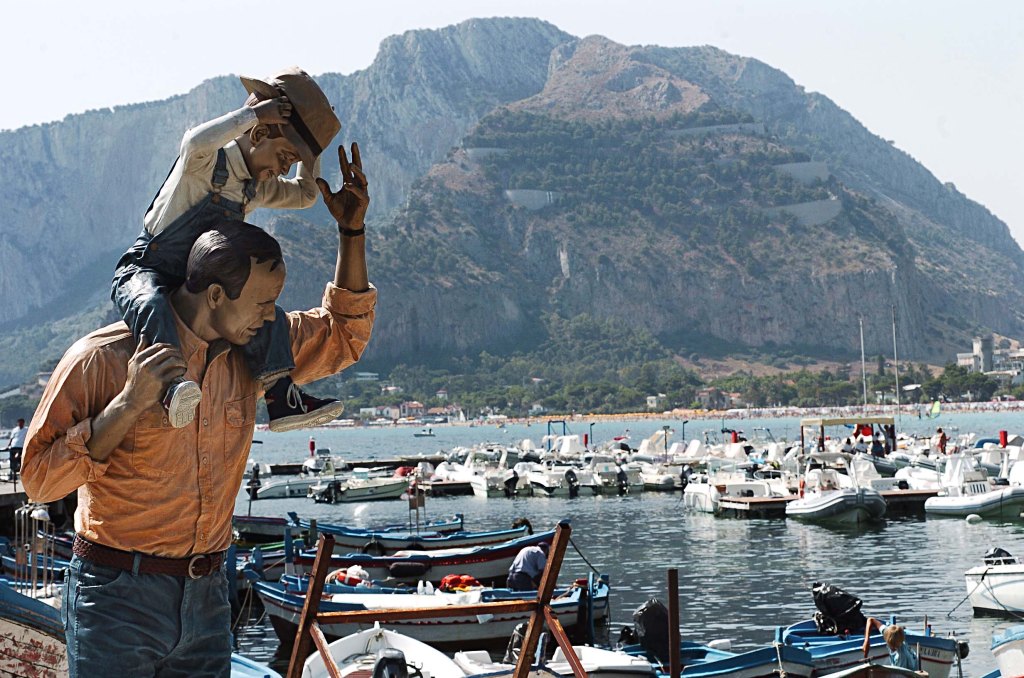[ad_1]
J. Seward Johnson Jr., a sculptor whose realistic representations of people have often been put on public view, died on Tuesday at age 89. The New York Times reports that the cause of his death was cancer.
Johnson often placed his lifelike, life-size sculptures on benches and street corners so as to integrate his inanimate subjects into the bustling world around them. Some evoke people reading newspapers or conversing with one another, while others represent actions like hailing cabs, wielding umbrellas, and gardening.
For his series “Beyond the Frame,” which has been shown at the Corcoran Gallery of Art in Washington, D.C., the Cummer Museum of Art & Gardens in Florida, the Nassau County Museum in New York, and elsewhere, Johnson found inspiration in iconic artworks. His sculpture Confrontational Vulnerability (2011) is a three-dimensional rendering of Édouard Manet’s 1863 painting Olympia. Other pieces by Johnson have alluded to Grant Wood’s American Gothic (1930), as well as works by Pierre-Auguste Renoir and Henri Rousseau, while still others take on famous figures from popular culture. Forever Marilyn (2011), a 26-foot-tall Marilyn Monroe, is one of his best-known pieces.
One of Johnson’s sculptures in New York has a remarkable history of its own. Double Check, a 1982 bronze work of a seated man with a briefcase, was originally installed in Liberty Park near the World Trade Center. The sculpture remained intact following the destruction of September 11, 2001, and in 2006 it was moved downtown to Zuccotti Park.
Johnson told the New York Times in 2005 that Double Check shows a “businessman Everyman,” and that “when he survived, it was as if he was one of them—surviving as well.”
Born in 1930 in New Brunswick, New Jersey, Johnson was part of the family that founded Johnson & Johnson, the company that produces medical devices, pharmaceuticals, and other health-care and wellness goods. He studied poultry husbandry at the University of Maine before enlisting in the Navy in 1951.
Johnson’s second wife, Cecelia Joyce Horton, whom he married in the mid-1960s, is credited with sparking his interest in art. In 1974, Johnson established a since-closed sculpture school and fabrication center called Johnson Atelier in Hamilton, New Jersey. Ten years later, he opened the 42-acre sculpture park, museum, and arboretum Grounds for Sculpture in Hamilton, which holds a number of his works—including Were You Invited? (2001), La Promenade (1999), and Crossing Paths (2011)—in its collection.
Throughout his career, Johnson placed his sculptures in some of the busiest sites across the globe, among them Times Square in New York, the Via Condotti in Rome, and Hong Kong Harbor. His work has shown at the Knoxville Museum of Art in Tennessee, the RW Norton Art Museum in Louisiana, and other institutions.
Johnson’s work was sometimes dismissed by critics as kitsch. In a review published in the Washington Post in 2003, Blake Gopnik characterized works in “Beyond the Frame” at the Corcoran Gallery of Art as “prankster art,” in condemnation of an exhibition he called a “stunning mistake” on the part of the institution’s board. Christopher Knight called Forever Marilyn a “grotesque colossus fabricated with typical ham-handedness by sculptor J. Seward Johnson” in the Los Angeles Times in 2014.
In a 2002 New York Times profile of the sculptor, J.D. Reed found Johnson’s work worthy of praise, writing that he “brings sculpture down to ground level, where it celebrates the simplest human acts and attitudes.”
[ad_2]
Source link


